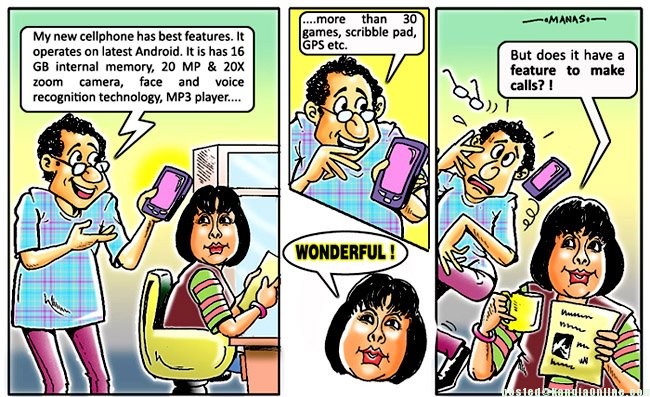By Ananya S Guha
The globalized world and technology has its own rapidly changing contexts. How do we adapt to such rapid fire change? Technology is providing everything, but it is also changing at break neck speed, which makes adaptibility a condition. Adapt or persish or continue with obsolescence.
Let us first take the instance of the Radio. In my generation in India, it was the life line to the world around, to news both national and international. Entertaiment was also provided, the news over All India Radio was the only news we could listen to and BBC. If our radio transmitter was powerful enough then we would get to listen to the Voice of America, or for that matter Australian Broadcasting Corporation. One of my secret delights was to listen to the sonorous voice of the Indian News Caster Vijay Chakrapani on ABC! regretting that he left AIR. All this while mind you, the radio in India was used for literacy and educational broadcasts, the expression that has got coinage today: `edutainment`. Media literacy was used by All India Radio even in the 60s and 70s but this was not given much prominence. Later in the 1990s I came to know that the media, especially the Radio was used for dissemination of information for agriculture and for the benefit of the farmers. We must remember that the noted and internationally reputed agricultural scientist M.S. Swaminathan got recognition in the 60s and 70s and the Borlauge Award in the 1970s. What was technology then, but only the relic which we call the Radio? Yet All India Radio was consistently broadcasting programmes for farmers and allied target groups. Literacy was given prominence, and the literacy that we talk today about is perhaps neo-literacy, that is literacy for neophytes.

Then, now we have the burgeoning era of the television. Apart from the news the government owned channel till the mid eighties focussed apart from news on quasi entertainment and of course we all sat with our eyes glued to watch movies on Sundays, or in the evenings or the famed Chitraahar which had the potential as Amita Malik pointed out to be an excellent programme, but alas could not live to its much vaunted potential. I personally felt a lot of time was wasted on the wrong choice of songs! One memorable occasion was the telecast of Kishore Kumar`s songs in 1987 just after his death. But Kishore Kumar till today is immortalized and is a living legend. Then of course came Cable TV and so many networks that there was and of course still is a plethora of choices. The caution is that we have to see that our children and the younger generation do not fall a prey to sexist overtones and the culture of violence, rape and murder. In between we have had educational channels like the Gyan Vani and EDUSAT telecasts for 24 hours, but I wonder how many views them, or what measures the government is taking to systematize such telecasts all over the country so that they are watched by the illiterates, the literates, the neo-literates and students both in school and universities. I remember All India Radio Shillong having educational broadcasts in the afternoons at a time when the school children for whom it was meant were in the classrooms listening to chalk and talk theories. I could not see the point of such broadcasts though many of them prepared by the Central Institute of English and Foreign Languages Hyderabad were of excellent quality and should have been broadcast for school teachers as well. In fact, these could have been made into teacher training modules especially for communication skills. Again, the vantage and advantage points of the media were obfuscated. In the meantime, followed the UGC broadcasts; for college and university students which were mainly very boring and a replication of classroom lectures. There was no attempt at innovation. These telecasts were gradually phased out and they were also telecast at very inappropriate timings mainly in the afternoons or early evenings.
Now we have the world of computers, mobile phones and the internet. All three can be blended for educational purposes and interaction between teachers and students as well as academia and industry. But again we have missed the wood for the trees. No concerted planning is being given to the use of technology in a blended manner for education. The Government of India`s Educational Portal Sakshat does not seem to have taken off. I have tried on several occassions tried to listen to Prof. C.N. R. Rao`s lectures meant for school children but simply could not!
Contrary to the speculations that the Radio would die a natural death, it has bounced back into life with FM Radio Channels. But where is education? Universities like the Indira Gandhi National Open University do have their own Radio Channels such as the Gyanvani Stations but here too the results are not very fructuous.
Unless the policy makers and planners envision media literacy and technology for education in an imaginative and systemic manner, the best of technology to be used for the best of education will be totally wasted. All that we will have is educational toys.


